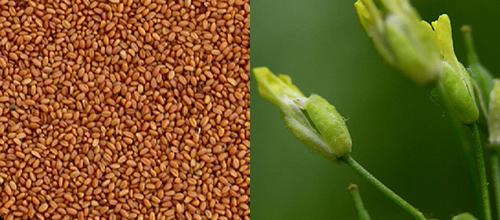Principal Investigator: Frank Forcella
Organization: University of Minnesota, Department of Agronomy and Plant Genetics
Award Amount: $266,156
Start Date: 7/1/2014 | End Date: 6/30/2017
Project Manager: Luke Stuewe (Luke.Stuewe@state.mn.us)
Research Objectives
This project assessed cover cropping techniques that have dual purposes: improving water quality while simultaneously maintaining or enhancing financial profitability in Minnesota.
Agronomic variables:
- Seed and oil yields
- Disease, weed, and insect pressures
- Harvest dates
Environmental variables:
- Water use
- On-site use and retention of nitrogen and phosphorus
Economic Variables:
- Input costs
- Economic return
This research was conducted along a gradient that spans from the northwest to the southeast region of Minnesota. Performing the research in different regions tested the limits and feasibility of growing winter oilseed crops across Minnesota.
Background
Cover crops, in general, provide crucial environmental services including nutrient scavenging, weed suppression, soil erosion protection and runoff reduction. Recently developed dual-purpose cropping systems may provide environmental benefits and provide economic advantages to Minnesota farmers. Winter camelina (Camelina sativa) and field pennycress (Thlaspi arvense L.) are winter-hardy oilseed crops that could generate cash for growers in the spring prior to planting traditional soybean cash crops.
Project Description
Researchers conducted three, nearly identical experiments in three different locations; Roseau, Morris, and Waseca, Minnesota.
Null hypothesis (hypothesis being tested): A cropping system including winter camelina or field pennycress will be equivalent to a standard soybean crop in terms of oil yields, economic return, water use, and fertilizer uptake and retention.
Alternative hypothesis: a field pennycress/soybean or winter camelina/soybean cropping system has higher oil yields, economic returns, water use, and fertilizer uptake and retention when compared to a standard soybean crop followed by winter fallow.
Methods and Data Collection

Camelina seed and flower
Deliverables
- Results of the comparative yields, gross returns, and net returns for each cropping system tested
- Results for soil water use, nutrient uptake, and offsite sediment movement related to the cropping systems tested.
- An Extension Bulletin that acts as a grower’s guide and explains the financial and environmental benefits of the dual-purpose cropping system.
- A peer-reviewed journal article based on crop yields and net returns and a peer-reviewed journal article on the ecosystem services provided by the dual-purpose cropping system.
Education and Outreach
Farmers
- The University of Minnesota Research and Outreach Centers will host field days focusing on dual-purpose cropping systems. The locations include Morris, Lamberton, and Waseca.
- Development and distribution of a “Dual-cropping System Grower’s Guide”.
Students
- Support of a graduate student and postdoctoral research associate.
Scientific community
- Development of peer-reviewed journal articles
- On-campus seminars
- Field days focusing on dual-purpose cropping systems

